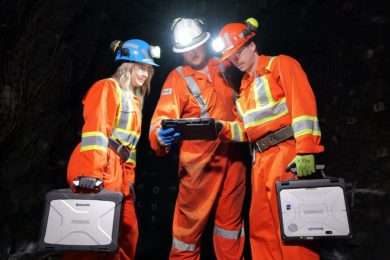 Communities around the Australian state of Queensland will provide the many thousands of new employees needed to service Queensland’s resource sector expansion out to 2020, according to a QRC Growth Outlook Study released last week. Queensland Resources Council Chief Executive Michael Roche said that the study by Deloitte Access Economics with the co-operation of QRC member companies was an essential guide for industry, governments and communities in maximising the benefits to Queensland over the next decade.
Communities around the Australian state of Queensland will provide the many thousands of new employees needed to service Queensland’s resource sector expansion out to 2020, according to a QRC Growth Outlook Study released last week. Queensland Resources Council Chief Executive Michael Roche said that the study by Deloitte Access Economics with the co-operation of QRC member companies was an essential guide for industry, governments and communities in maximising the benefits to Queensland over the next decade.
The report is based on analysis of 66 resource sector projects either under study, committed or under construction. Combined they represent capital expenditure by 2020 of A$142 billion.
‘One of the report’s major findings is that if all identified projects proceed, Queensland’s minerals and energy industries will need another 40,000 workers-initially in construction over the next three years and then in operations for the remainder of the decade,’ Roche said.
‘In human terms, this is a re-run of the sector’s employment growth in Queensland over the past decade with direct employment rising from under 20,000 in 2001 to more than 60,000 this year.
‘However, the game has changed on a number of fronts with industries and regions being hit hard by global economic jitters.
‘It’s also no secret that the state’s resource communities are feeling the strain of the last growth surge and there is limited, if any appetite for another round given the lag-time in infrastructure and social service funding from governments. However, Bowen Basin resource project developers are currently factoring in an almost 25% increase in their residential workforce from the current 17,700 to an estimated 21,900 by 2020. Over the same period, the number of non-resident resource industry workers in the Bowen Basin could rise from 7,300 to 20,000 under a full growth scenario.
‘By 2020, just over half the Bowen Bowen resources workforce is forecast to be locally based. However, that should not detract from the fact that few regions anywhere in the country are likely to face population growth pressures of the magnitude projected for towns in that region.’
Roche said the QRC Growth Outlook Study shows that if all identified projects proceed, nearly 32,000 non-resident workers would be sourced from regions around Queensland, multiplying the economic benefits of the sector’s prospective growth across many communities.
‘The 25,000 people who have attended the state government’s Work for Queensland Mining and Gas Jobs Expos show that there’s massive interest statewide in opportunities to share in resource sector growth.
‘Armed with the rich data contained in the report to be released on Tuesday, Queensland is going to be better informed about the scope of both the opportunities and challenges ahead rather than reacting to forces shaped by economic revolution occurring in Asia,’ Roche said.








